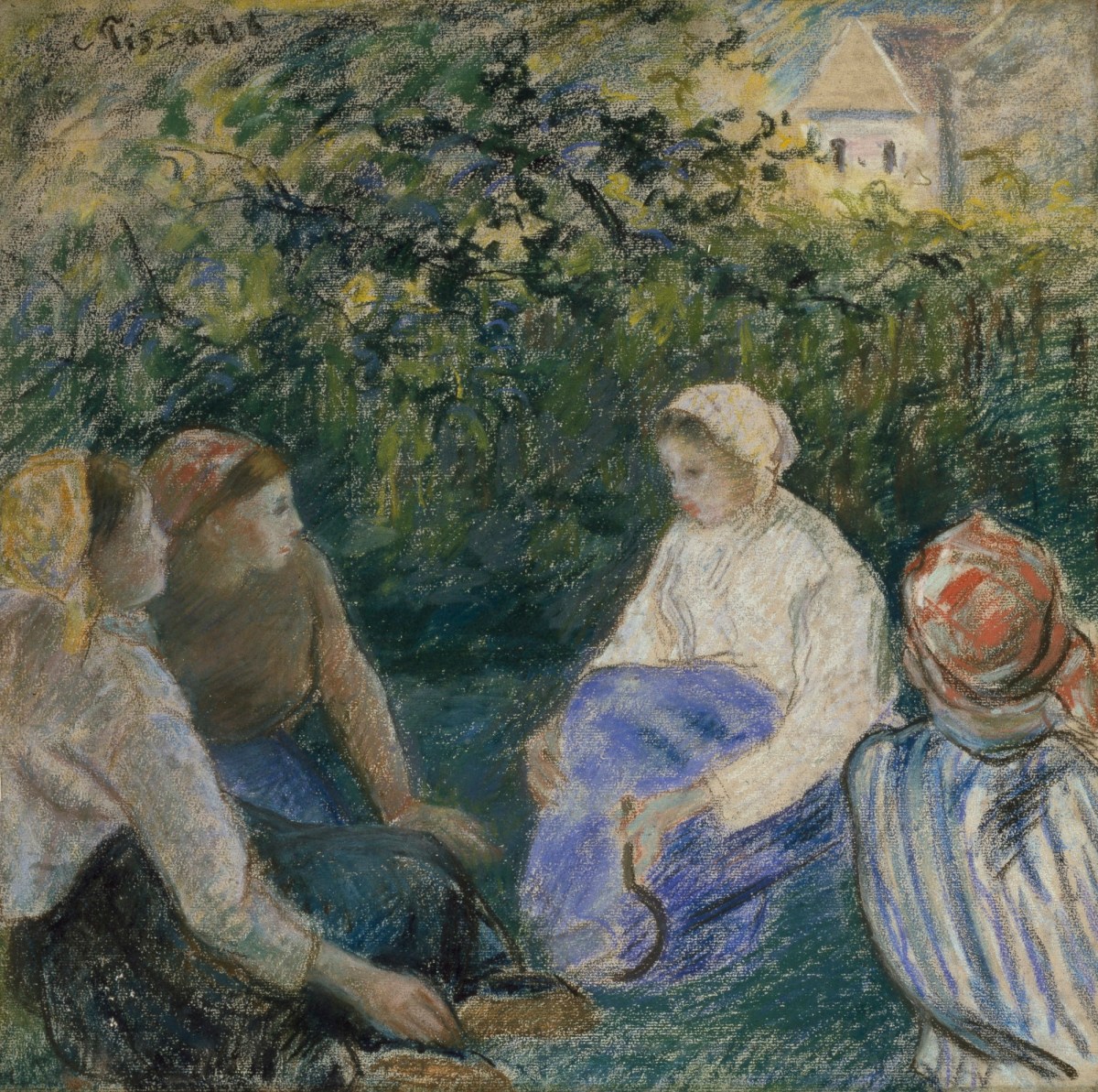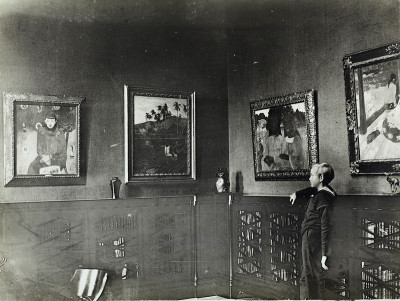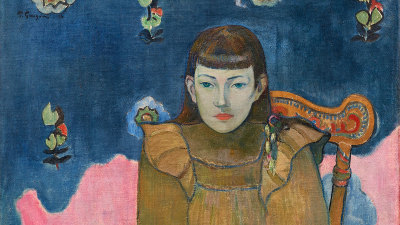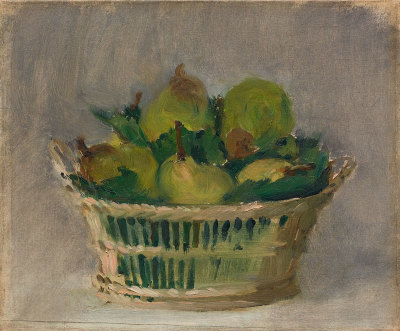
Camille Pissarro, Paysannes Assises, ca. 1885.
Pastel. 467 mm x 474 mm. © Photo: Royal Academy of Arts, London. Photographer: Prudence Cuming Associates Limited.
This image is not available to download. To licence this image for commercial purposes, contact our Picture Library at picturelibrary@royalacademy.org.uk
Paysannes Assises, ca. 1885
Camille Pissarro (1830 - 1903)
RA Collection: Art
Paysannes Assises shows four women seated in an orchard, the central figure carrying a scythe, suggesting the women are taking a rest from their recent work.
Positioned in a circle and engaging with each other, the female figures do not engage with the viewer and one even has her back to us, suggesting a complete absorption in their way of life. Any suggestion of hard labour is minimised and instead, the sense of communal rest is emphasised: the figures appear to be in balance, enjoying the natural shade afforded by the tranquil orchard setting. The fresh tones of white, brown, blue and red of the women's clothing are set off by the rich greens of their surroundings and the overall impression is one of vitality and restfulness, enhanced by the soft, dynamic markings of Pissarro's chosen medium of pastel.
Pissarro was one of the key proponents of the Impressionists and is often considered to be the 'father' of the movement. He was the only painter to exhibit in all eight of the Impressionist exhibitions between 1874-1886. From around the 1880s till his death, Pissarro spent much time living with his family in Eragny, a small town northwest of Paris where his observations of rural French life became the key subject in his work. Like other members of the Impressionist group, Pissarro, in this period he was becoming dissatisfied with his work and sought to introduce a more structured method to his painting. Perhaps in an effort to simplify the content of his compositions, he turned from the spatial problems inherent in landscape painting to portrait-like representations of peasant girls. The large figural studies of the seated women start to occupy the majority of his pictures, where he deliberately enlarged his figures, lending them a sense of monumentality and elevating the simple domestic scene.
Pissarro's observations of the daily life of the farming peasant community reflected his anarchist beliefs, and in particular his support of the ideals found in Pierre Kropotkin's The Conquest of Bread published in Paris in 1892 which described a utopian vision of a future society composed around a balance of work, rest and leisure activity. For Pissarro, agrarian life was rooted in the principles of cooperation and integration with the cycles of nature, resulting in an ideal, harmonious way of living. Yet his paintings were has not to be seen as bidimensional representations of an ideology or tools of political propaganda. As in his review of the seventh Impressionist exhibition, the novelist and critic J.K. Huysmans commented: "He paints his country people without false grandeur, simply as he sees them".
The Paysannes Assises, is one of several works by members of the Pissarro family that came into the Academy's collection following a donation of 150 works from Carel Weight RA. The variety of works in the bequest demonstrate Weight's range of artistic inspirations and his wide network of artist friends and associates, including members of the Pissarro family, particularly Orovida Pissarro, granddaughter of Camille Pissarro.
Object details
467 mm x 474 mm
Start exploring the RA Collection
- Explore art works, paint-smeared palettes, scribbled letters and more...
- Artists and architects have run the RA for 250 years.
Our Collection is a record of them.



